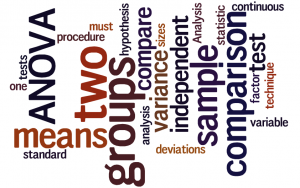- Introduction
- As Deming (1950) so succinctly puts it:
“Sampling is not mere substitution of a partial coverage for a total coverage. Sampling is the science and art of controlling and measuring reliability of useful statistical information through the theory of probability.”
- The enumeration of population by sampling methods, proposed by Laplace in 1783, came into widespread use only by the mid-thirties of this century. From the outset, some basic questions arose:
- i. How should the observations be made?
- ii. How many observations should be made?
- iii. How should the total sample be made?
- iv. How should the data thus obtained be analysed?
- The answers to these questions were sought and, in the process, a number of different techniques and methods were developed. These methods were tested to determine whether the above mentioned questions were adequately or not. In course of time, the concept of generalisation through the introduction of inductive logic, i.e., proceeding from the part to the whole, caught the attention of statisticians engaged in developing suitable techniques of sampling. In this context a related question cropped up, viz. how should this generalisation be made? The answer to this question was sought with the help of technique of probability. Thus the concept of probability sampling originated. The use of probability in sampling theory came to be recognised as a reliable tool in drawing inferences about the populations, whether finite or not.
- In traditional applications, the experimenter assumes some kind of probability structure with the observations, while in sample surveys he introduces the probability element by adopting the technique of randomisation. The idea of probability structure in planned experiments was originally given by Fisher (1935) who showed that deliberately introduced randomisation in the selection of a part from the whole provides a valid method of obtaining an estimate of the amount of error committed. He demonstrated practically that the randomisation not only gives a procedure for valid selection of the part from the whole, but also gives an expression to the amount of risk committed in doing so. Thus, the problem was reduced to determining the methods for selection and estimation, which would minimise the risk involved. Mahalanobis (1944) introduced another important concept- the combinations of selection and estimation procedures which would minimise the cost function.
- Fields of application of sampling techniques and limitations
- The main objective of this work is to present the theory and techniques of sample surveys with their application in different types of problems in the field. Sample surveys are to be widely used as a means of collecting information to meet a definite need in government, industry and trade, physical and life sciences and technology, social, educational and economic problems, etc. the sample survey technique is now commonly used for obtaining information on various social and economic activities of society. All walks of life are covered by sample surveys. It is not possible to include the full range of applicants in this work.
- However, some specific situations in which sampling techniques can successfully be employed have been given:
- i. When results with maximum accuracy or reliability with a fixed budget, or with the minimum number of units with a specified degree of reliability are required.
- ii. When the units under investigation show considerable variation for the characteristic under study.
- iii. When the total count of the population is not possible or is very costly or destructive.
- iv. When the scope of the investigation is very wide and the population is not completely known.
- v. When time, money and other resources are limited.
- Sampling theory has its own limitations which may be briefly outlined as follows:
- i. In spite of the fact that a proper choice of design is employed, a sample fully does not cover the parent population and consequently results are not exact.
- ii. Sampling theory and its application in the field needs the services of trained and qualified personnel without whom results of sample surveys are not dependable.
- iii. The planning and execution of sample surveys should be done very carefully, or the data kay provide misleading results.
Click here for government certification in Statistics and Quality





3 Comments. Leave new
Well written..!
Very well explained!!
god one…